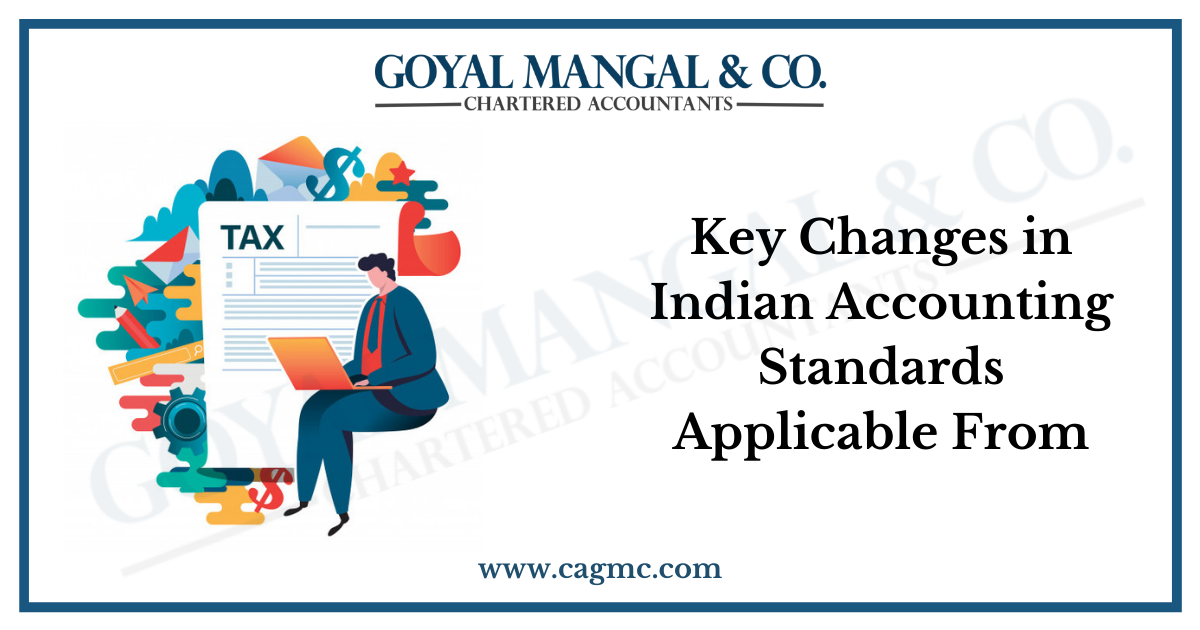| Table of Content |
On March 30, 2019, the Ministry of Corporate Affairs (MCA) notified certain amendments to Indian Accounting Standards (Ind AS). All these amendments are effective from financial year beginning on or after 1April, 2019.

Ind AS 116: Leases
Ind AS 116 shall be applied for accounting of leases by lessee and lessor in their respective books. Compared to previous Standard (Ind AS 17) on leases which shall be omitted with effect from. April 1, 2019, principles of Ind AS 116 for lessor are substantially same. However, there is significant change in the way a lessee shall account for leases in its books.
It provides that an entity, being a lessee, shall treat almost all leases, except leases for short-term and leases of low value assets, as finance leases. The entity shall recognize a right-of-use asset and a lease liability whenever it takes any asset on lease. The right-of-use asset shall be measured at cost that comprises of initial value of lease liability, lease payments made on or before the commencement of lease, initial direct costs incurred by the entity and an initial estimated cost of dismantling & removing the leased asset and restoring the site on which the asset is located. The lease liability shall be measured at the present value of the lease payments due. The interest rate implicit in the lease or lessee’s incremental borrowing may be used to arrive at the present value. Subsequently, at each balance sheet date, the right-of-use asset shall be depreciated and lease liability shall be increased by interest amount & decreased by amount paid. The right-of-use asset may also be measured at revalued amount under revaluation model.
Ind AS 109, Financial Instruments
The amendments notified to Ind AS 109 pertain to classification of financial instruments with prepayment feature with negative compensation. Negative compensation arises where the terms of the contract of the financial instrument permit the holder to make repayment or permit the lender or issuer to put the instrument to the borrower for repayment before the maturity at an amount less than the unpaid amounts of principal and interest. Earlier, there was no guidance on classification of such instruments.
According to the amendments, these types of instruments can be classified as measured at amortized cost, or measured at fair value through profit or loss, or measured at fair value through other comprehensive income by the lender or issuer if the respective conditions specified under Ind AS 109 are satisfied.
Ind AS 12, Income Taxes:
The first amendment requires an entity to create a corresponding liability for Dividend Distribution Tax (DDT) when it recognizes a liability to pay a dividend. The liability for DDT shall be recorded in statement of profit & loss, other comprehensive income or equity, as the case may be.
The second amendment relates to tax consequence of an item whose tax treatment is uncertain. Tax treatment of an item is considered as uncertain when there is uncertainty whether the relevant taxation authority will accept the tax treatment of that item or not.
If there is uncertainty over tax treatment of an item an entity should predict the resolution of the uncertainty. If it is probable that the taxation authority will accept the tax treatment, there will be no impact on the amount of taxable profits/losses, tax bases, unused tax losses/credits and tax rates. In vice-versa case, the entity shall show the effect of the uncertainty for each uncertain tax treatment on amount of related items by using either the most likely outcome or the expected outcome of the uncertainty.
Ind AS 19, Employee Benefits
The amendments to Ind AS 19, Employee Benefits relate to effects of plan amendment, curtailment and settlement. When an entity determines the past service cost at the time of plan amendment or curtailment, it shall re-measure the amount of net defined benefit liability/asset using the current value of plan assets and current actuarial assumptions which should reflect the benefits offered under the plan and plan assets before and after the plan amendment, curtailment and settlement.
Ind AS 28, Investments in Associates and Joint Ventures:
Ind AS 109 excludes interest in associates and joint ventures that are accounted for in accordance with Ind AS 28, Investments in Associates and Joint Ventures from its scope. According to the amendments, Ind AS 109 should be applied to the financial instruments, including long-term interests in associates and joint venture that, in substance, form part of an entity’s net investment in associate or joint venture, to which the equity method is not applied.


